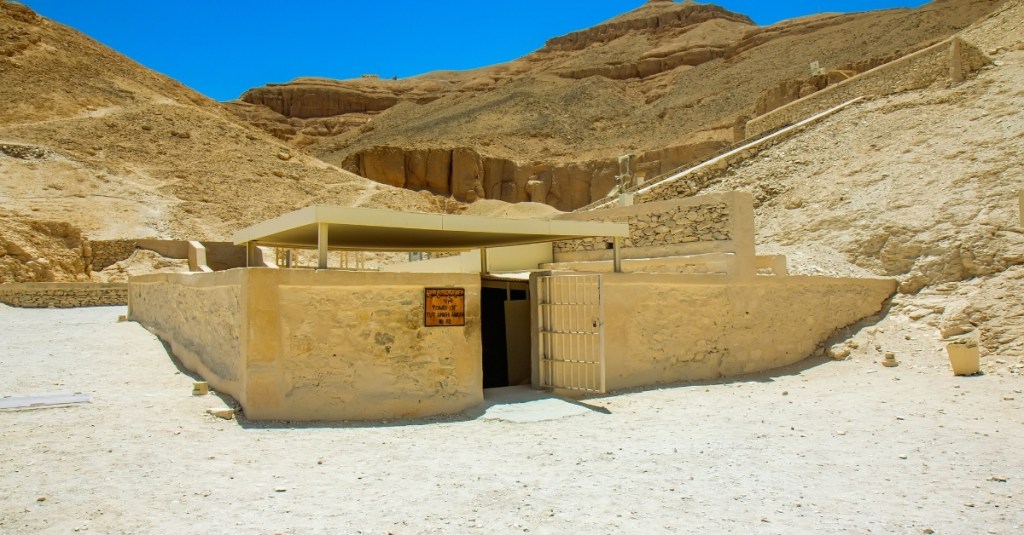The tomb of King Tutankhamun, the 3,300-year-old burial site that defined modern Egyptology, is falling apart. Cracks are spreading through its ceiling, fungi are eating away at the walls, and water damage threatens to erase one of history’s most famous discoveries. Archaeologists warn that if something isn’t done soon, the boy king’s resting place could literally collapse.
A new study from Cairo University published in Nature describes the tomb’s condition as “alarming.” Professor Sayed Hemeda, who co-authored the paper, told the Daily Mail that “current and future risks” could undermine the structure’s integrity.
A single crack above King Tut’s burial chamber has become the tomb’s biggest threat. It cuts through the ceiling, letting in rain that seeps into the ancient stone. The walls, made of Esna shale, expand with moisture and contract when they dry. That constant pressure is warping the structure inch by inch.

King Tut’s Tomb Is Crumbling. How Archaeologists Are Going to Save It.
The damage began in 1994, when rare desert rain flooded the Valley of the Kings. Water pushed through the rock and into Tutankhamun’s tomb, soaking the walls and creating fungal growth that has persisted ever since. Even now, the humidity remains a constant threat, weakening the stone and eating away at the art that made the tomb famous.
To make things worse, the entire valley is sitting beneath a mountain that’s cracking, too. Professor Mohamed Atia Hawash from Cairo University says the surrounding rock formations are fractured and unstable. If part of that mountain gives way, it could send tons of stone crashing down onto the tombs. “A disaster could strike at any moment,” he warned, calling the situation a “stark reminder” of how fragile these monuments have become.
Researchers are now suggesting an audacious plan to save the site. That includes stabilizing the mountain above the tomb, possibly removing some of its load, and installing temporary supports within the chambers themselves. Conservation teams also want to control the humidity and temperature inside the tomb to slow the damage.
Discovered in 1922 by British archaeologist Howard Carter, Tutankhamun’s tomb is small compared to others in the valley but legendary for what it held. More than 5,000 artifacts were found inside, including golden coffins, statues, and the iconic death mask that became a global symbol of ancient Egypt.
The irony is painful. The tomb built to preserve a pharaoh’s memory for eternity may not survive another century without intervention.
The post King Tut’s Tomb Is Crumbling—and Archaeologists Might Have to Move a Mountain to Save It appeared first on VICE.




